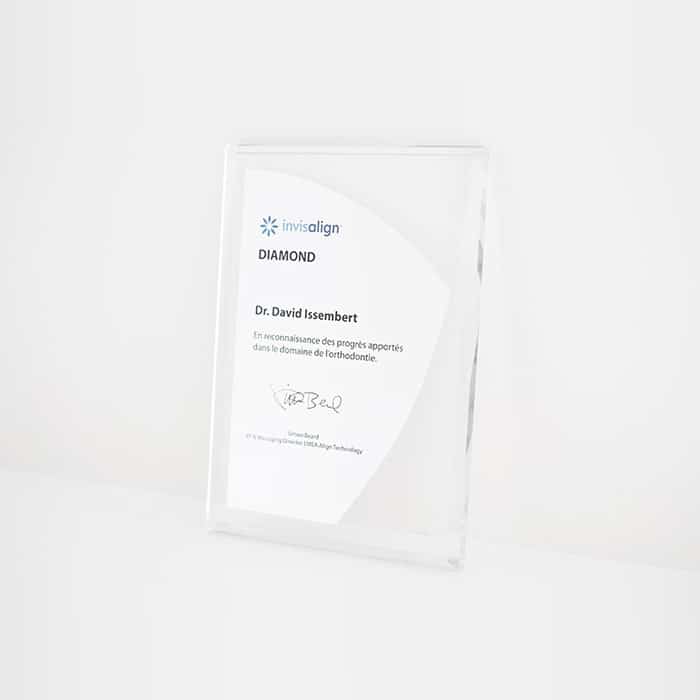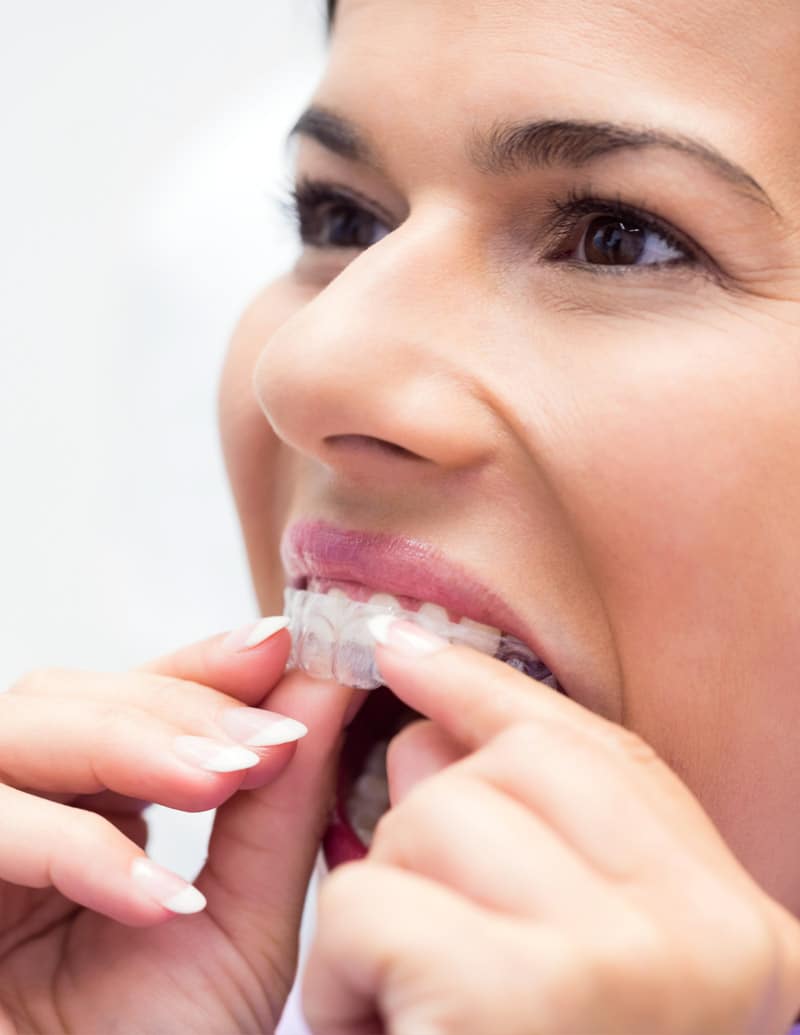Invisalign in Paris by
Dr. Issembert
Invisalign, what is it ?
The aligners are made from the impressions of your teeth. Once your impressions are taken in our Paris office with our iTero scan, Dr. Issembert performs the digital simulation of your treatment.
Without the orthodontist’s control over the simulation, treatment is random and unpredictable. Thus, one must always keep in mind that aligner brands such as Invisalign,
Clear Correct or Orthocaps are only plastic supports to move teeth, which, without the strategy that your orthodontist puts in place for your treatment, do not work.
For certain types of dental movements, our Invisalign patients in Paris can wear their aligners for only one week. At each appointment, adjustments are made to the teeth and aligners so that the movements can take place. Everything is done to ensure that the treatment takes place in the best possible conditions for the patient.
The Invisalign by Issembert technique
Dr. David Issembert has 17 years of expertise in the implementation of orthodontic treatments using Invisalign clear aligners, and he treats over 700 patients per year with these invisible “aligners” in Paris.
Dr. David Issembert has developed a unique treatment technique, Invisalign by Issembert, which meets the criteria of aesthetics, effectiveness and stability of treatment, in line with his philosophy.

AESTHETIC REQUIREMENT
- Prediction of stripping to the nearest tenth of a millimeter to correct black triangles in particular
- Cleats positioned inside the front teeth for aesthetic reasons during treatment.

Stability
- Coordination of the arches to avoid recurrences
- Predicting the restraint: an occlusion that allows for a stable restraint wire over time, to prevent recurrence
- A global package, which systematically includes double restraint (wire + 2 safety gutters)

EFFECTIVENESS
- For better efficiency, Dr. Issembert removes, for example, orthodontic movements that cannot be performed with “aligners” from the simulation, he shifts movements that cannot be performed simultaneously on the same tooth, etc.
- Invisalign Full tool (without limitation of the number of aligners over a period of 5 years) with full control of Dr. Issembert, tooth by tooth and cleat by cleat
Invisalign by Issembert |
Other treatments |
|
|---|---|---|
| Guaranteed result (if the recommendations are followed and the gutters are worn properly, the result will remain aesthetic) | Yes | No |
| A global rate, with no unpleasant surprises (additional semester or additional retention for example) from the impression appointment to the double retention (wire + 2 safety trays)*. | Yes | No |
| Cleats positioned inside the front teeth for aesthetic reasons during treatment. | Yes | No |
| Outil Invisalign Full (qui permet d’utiliser le nombre de finitions nécessaires pour un résultat esthétique, sans surcoût) | Yes | No |
| Invisalign Full tool (which allows the use of the number of finishes necessary for an aesthetic result, without additional cost) | Yes | No |
| Design work done by the orthodontist (e.g., removal of orthodontic movements that cannot be done with aligners from the simulation and shifting of movements that cannot be done simultaneously on the same tooth. | Yes | No |
| Predictability of restraint: an occlusion that allows for a stable restraint wire over time, to prevent recurrence. | Yes | No |
| Prediction of the stripping to the nearest tenth of a millimeter to correct black triangles in particular. | Yes | No |
| Coordination of the arches to avoid recurrences. | Yes | No |
Treatable cases in Invisalignby Issembert
All orthodontic cases can be treated with Invisalign by Issembert. Dr. Issembert’s expertise allows him to obtain the same results with Invisalign as with other types of treatment, even for complex cases sometimes requiring surgery.
For example, the following cases can be treated with Invisalign by Issembert:

ARTICULATED CROSS
A crossbite is a misalignment of the upper and lower jaws. One or more teeth of the lower arch may be outside the upper arch.
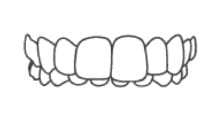
RECOVERY
The upper teeth overlap the lower teeth too much, which causes wear on the tips of the lower incisors and prevents the placement of a retention wire on top. The cases presented here combine moderate to severe overlap with these overlaps.

FORWARD TEETH
In the case of forward teeth, stripping or extractions are used to generate space to move back. The cases presented here are cases of bi-proalveolarity, i.e. the two arches go together in the front.
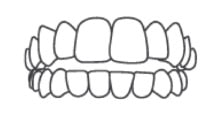
BÉANCE
The gap is characterized by the absence of contact between the upper and lower teeth. We speak of a posterior gap when it is located in front, and anterior when it is in the back that the contact is absent.
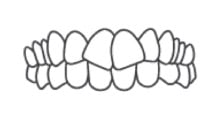
OVERLAPS
Due to a lack of space on the arch, teeth overlap. Stripping is often used to create space in addition to the orthodontic forces delivered by conventional or invisible appliances. In more severe cases, extractions may be considered.
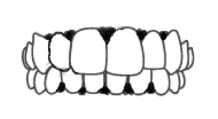
BLACK TRIANGLES
Some patients, for different reasons (gingival recession, loss of papilla) present black triangles between certain teeth. An orthodontic treatment associated with stripping allows the contact points between the teeth to be raised and the incidence of black triangles to be reduced.
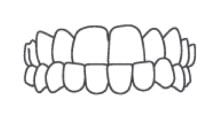
UNDERBITE
When the lower teeth are more forward than the upper teeth. It is possible to correct this type of case by combining surgery with Invisalign treatment.
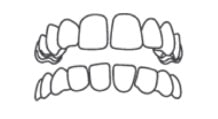
SPACE
These are spaces between the teeth that are corrected with orthodontic treatment. Depending on the nature of the spaces to be closed, the treatment plan is different.
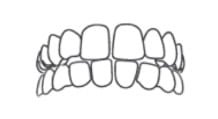
END TO END
End-to-end is a malocclusion which, as its name indicates, refers to a situation where teeth from both arches touch each other end-to-end when closing the teeth, which generates wear on the teeth.
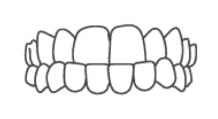
OTHER CASES
The cases we have described here are the most common, but many specific cases may present themselves for treatment. These include surgical cases (Cl2, Cl3, etc), or cases with extraction.
What are the steps of an Invisalign treatment ?
From the first appointment to the retention wire, several steps are essential to the success of an Invisalign by Issembert treatment. Here is a detailed description of how your treatment will proceed:

The First Consultation appointment
The first step of an Invisalign treatment is to determine if this solution meets your expectations and to make a diagnosis. Dr. Issembert’s expertise will allow him to propose Invisalign by Issembert for all types of cases, but first of all, it is necessary to carry out a diagnosis and to see with you your expectations, and the different possibilities of treatment and their implications (for example, with or without surgery, etc).
Beyond the clinical considerations, it is at this moment that we discuss with you the requirements of the treatment (wearing the aligners 22 hours a day in particular), and that we carry out an estimate which will enable you to know in detail your assumption of responsibility. Orthodontics Invisalign Pontoise 95.
The meeting of Empreintes, Photos et Radios
Once you have decided to begin Invisalign treatment, we take x-rays, photographs and impressions of your teeth. Don’t worry, this appointment is made fast and pleasant by our in-office equipment. A state-of-the-art iTero scanner allows us to take your impressions without paste, and without any discomfort. X-rays are also taken directly in our office, thanks to our specialized radiography equipment
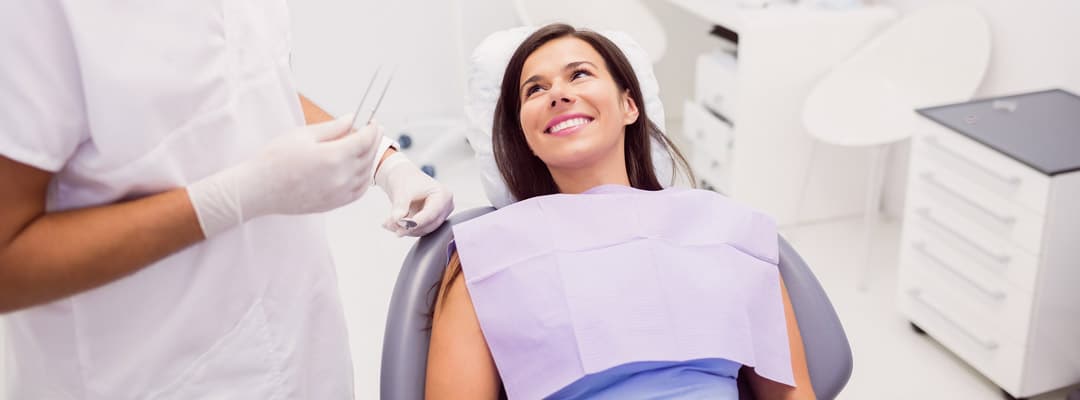
Dr. David Issembert establishes a treatment plan
Once the impressions have been taken, Dr. Issembert works on the treatment plan, commonly called “Clincheck”, named after the associated software. The treatment plan is based on the impression, photos, X-rays, the initial consultation diagnosis and discussions with the patient. The doctor works on each tooth, one by one, the position of each cleat, of the possible stripping, and of all the elements of the treatment in order to obtain the final treatment plan, cut into trays that will progressively carry out the movements.
The installation of Invisalign gutters
Between 3 and 5 weeks after the impression, we schedule a fitting appointment at the office. During this appointment, which lasts about an hour, we place the cleats on your teeth, give you the first sets of aligners and explain how the aligners work and the rules to follow to ensure that the treatment goes smoothly.

Treatment and finishes
As your treatment progresses, we schedule office appointments every two to five months, depending on treatment needs. In some cases, treatment can be accelerated at a certain time, but this depends on the case and the progress of the treatment.
After the last aligner has been worn for two weeks, the treatment may require some adjustments to achieve a perfect result. This is not uncommon. Dr. Issembert, in agreement with the patient, and at no extra cost, makes a finishing impression and works on a treatment plan for the finishing touches. These aligners, in continuity with the others, will allow the desired result to be achieved perfectly.
Double restraint, a guarantee of stable treatment
Dr. Issembert attaches great importance to the durability of the treatment, and does everything possible from the beginning to ensure that there is no orthodontic recurrence. This involves a series of movements to be performed or avoided during treatment, as well as the use of a double retainer: a retainer wire glued to the back of the teeth from canine to canine at the top and bottom, and a safety splint. The wire must remain in place for life, and for this reason the treatment plan must foresee its position from the start, so that the occlusion does not jeopardize its hold. In addition, if the wire breaks, the retention trays, which should be tried regularly in the evening, provide a safety net to wear until the wire is repositioned in the office. This double retention is an essential guarantee of the good results of the treatment in the long term.
Invisalign By Issember to
adults
Discretion
- It is an invisible treatment, the aligners are not visible unlike external braces
- Gutters can be removed temporarily if you are concerned about their visibility, but this fear will soon fade.
- The cleats are invisible because Dr. Issembert always positions them behind the front teeth
Comfort
- Appointments at the office are relatively short and spaced out, with extended hours to facilitate organization.
- It is possible to eat all types of food without restriction because the trays are removed during meals.
- The trays are easy to use and do not generate untimely appointments such as a detached ring or a broken wire.
Invisalign by Issembert for children and adolescents
Dr. Issembert also treats many children and adolescents with Invisalign clear aligners. Children and teenagers who want a discreet treatment are delighted to have an Invisalign treatment and follow the instructions for wearing the aligners to the letter!
For example, for a girl who requires expansion and has a crossbite, a circuit breaker combined with Invisalign “aligners” may be considered in the treatment.
What are the recommendations during an Invisalign treatment?
If the tray is irritating at first, you can apply orthodontic wax to the edges of the tray or file the irritating area with a nail file.
Frequently asked questions about the Invisalign by Issembert treatment
How long does an Invisalign by Issembert treatment last?
Is the Invisalign by Issembert treatment covered by social security?
If the treatment starts before the age of 16, the social security covers part of the treatment and then the mutual insurance company takes over.
If treatment begins after the age of 16, there is no longer social security coverage, but there are mutual insurance companies that reimburse part of the treatment. You can contact us by phone, email or on Instagram for more information.
If the treatment is ortho-surgical and begins after the age of 16, the social security system will pay for one semester of treatment.
Is the Invisalign by Issembert treatment covered by the mutual insurance company?
How much does an Invisalign by Issembert treatment cost?
Are there any things I won't be able to eat?
How long do I have to wear the aligners every day?
How many times can I pay for my Invisalign by Issembert treatment?
Is there any restraint after the treatment?
If I have to have surgery, can I still have an Invisalign by Issembert treatment?
Does an Invisalign by Issembert treatment hurt?
Is there an age limit to follow an Invisalign by Issembert treatment?
Is the Invisalign by Issembert treatment really invisible?
Can I kiss with Invisalign by Issembert aligners?
What is the frequency of appointments?
Do I have to wear a night brace after my Invisalign by Issembert treatment?
Can we practice a combat sport?
Can I play a wind instrument?
Can we sing with rings?
Do I have to wear a night brace after my Invisalign by Issembert treatment?
Still have questions about orthodontics? Visit our specialized FAQ pages or contact us directly by phone at 01 47 20 90 08 at our orthodontic practice in Paris.




